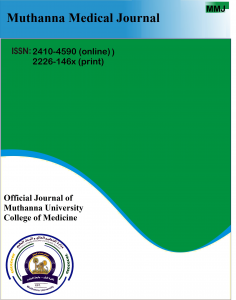
Research Article 
Wissam Sajid Hashim Al-Uboody¹*, Ihab Abbas Taher², Azal Hammudi Jumaa Al-Fatlawi³
Abstract
This study was done to find out the effects of oral use of gabapentin on different parameters of laboratory mice. In this study, three groups were used of twelve male mice each. The animals of the control group were maintained on a standard ration. The treated groups were also maintained on a standard ration but they were daily dosed orally with gabapentin. The first treated group (GABA low) were dosed orally with one ml of distilled water containing gabapentin as (25mg/ml/mice) daily. The second treated group (GABA high) were dosed orally with one ml of distilled water containing gabapentin as (50mg/ml/mice) daily. The experiment protocol continued for two months. The results revealed that the use of gabapentin of different doses causes the TAGs, TCH, LDL, VLDL of both treated groups to increase significantly as compared with control group and those values of the GABA high group were significantly higher than that of the GABA low group. The HDL was significantly reduced in both treated groups and it was more significantly reduced in that of GABA high group as compared with control and GABA low groups. Blood urea, creatine, and sodium were significantly increased in both treated groups as compared with the control one but blood urea of GABA high was significantly higher than that of GABA low group. No significant differences were seen for the blood potassium of all the groups. AST, ALT and ALP were also significantly increased in both treated groups comparing with that of the control one but ALT of GABA high was significantly less than that of GABA low group. For the albumin and bilirubin, there was no significant differences among all the groups at (P≤0.05).
Key words: Gabapentin; Lipid; Electrolyte; Kidney and liver